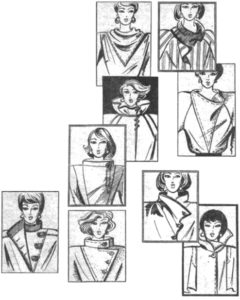Types of collars. Designing collars for a closed neck
Surprisingly, there is a unified classification of collars outerwear(despite the fact that this part is over 500 years old!) still not there. Some divide them according to the method of combining with the neckline into set-in and seamless, others according to the type of fastener into open and closed, others are generally perplexed: “How can you combine a hundred into some groups and classes? different styles, where each collar is a small masterpiece of tailoring?! The most general “breakdown” is given in textbooks on cutting and sewing: “Models of outerwear can have stand-up, stand-up, flat, jacket and fancy types of collars.” Let's stop there.
1. Stand collars
"Stand-up" collars were the first collars to appear on outerwear. In the 13th century, they were narrow strips of fabric - no more than two centimeters - on Burgundian cloaks and jackets. Jackets at that time were called insulated trapezoidal jackets of knights, worn under armor. From the 15th century, standing collars began to grow taller and wider, resulting in the appearance of such phantasmagoric styles as the “millstone”. It is said that the hem of this starched pleated collar was so cruel that without removing it it was impossible to reach the mouth with one's hand. But I wanted to eat. Therefore, the Italians, who had a special love for the “millstone,” had to invent the fork.
Today, the stand is used primarily for sewing outerwear, and its height varies between 2-5 centimeters. The most popular types racks: “mandarin”, “collar” and “pipe”.
"Mandarin" (aka "Chinese" and "Mao")
Already from the name it is clear that this collar came to us from Imperial China, a country with a strict hierarchical ladder and an equally strict dress code. "Tangerines" here for a long time called officials and civil servants wearing suits with a short, tight-fitting stand-up collar, the edges of which either touch in the middle or slightly overlap each other.
Women will surely like a coat with such a collar. knowledgeable in the subtle beauty of the East or those who prefer minimalist clothing. And in men's collections“Mao” - as a symbol of authoritarianism and power - is most often found on brutal picots, strict uniforms like those of Napoleonic marshals and laconic denim jackets.
"Clamp"
And this is greetings from the recent Soviet past. The “collar” was born from an English knitted sweater, or rather from its neck (this fashion came to the USSR in the 60s). At first he was very reminiscent of his ancestors - he was knitted, soft and tall. Later he began to sew from other materials: cashmere, wool, satin.
“Homutik,” as this type is affectionately called by needlewomen and fashion designers, softens the lines of a classic coat and gives it a touch of charming femininity. IN last years The cowl collar increasingly prefers to perform solo, becoming a separate item of women's wardrobe.
“Pipe” and its variety “Funnel”
The same as the “collar”, but made of stiffer fabric, without numerous cozy folds and waves.
2. Stand-up
They consist of two parts: a hidden stand and a visible pointed or, conversely, rounded extension.
Despite the variety of stand-up collars (“kent”, “butterfly”, “vario”, “tab”, etc.), only one model is usually used for sewing coats - “shark”. Its peculiarity is its widely spaced (like the mouth of a predator) departure corners. So wide that they form an obtuse angle. Other types of stand-up collars adorn men's and women's shirts.
3. Flat-lying
Purely women's collars, which were brought into fashion... by a man. The cutesy King of England, Henry III, was passionate about dressing up. And also perfume yourself, wear white stockings and curl your hair. One day, the king considered that the popular “millstones” were very heavy and not elegant enough and ordered a camisole with a light lace collar to be made for himself. Well, what the head of state wears, everyone wears. Later, such collars began to be sewn from satin and velvet, pinched with a brooch and tied with a ribbon for greater beauty.
Today, finding outerwear with a flat collar is a great success. These coat models are beautiful, a little naive, incredibly feminine, but not very practical (they cover the neck poorly), so they are supplied to stores in limited quantities.
4. Jackets
These are collars that have switched to outerwear from formal suits, men's jackets and tailcoats.
English collar
The most popular and perfect coats of all time are coats with an English collar similar to these models. Strict and elegant like an English aristocrat, he has been out of fashion and time for three centuries in a row; it’s not for nothing that almost all the coats of the President of Russia are decorated with this respectable collar!
Appearing first as a detail men's clothing, the English collar has become, and still remains, an integral part of business style for both men and women. He is gaining more and more fans due to the fact that he fits well into any dress code. It comes in many types women's clothing: coats, dresses, blouses, which allows you to diversify your office wardrobe. If we talk about a coat with such a collar, then to successfully complete it, it is recommended to wear a turtleneck under it or cover your neck beautifully with a scarf, but do not leave it open, especially in cold weather.
Schalke
East and West are fighting for the right to call it their own. The former claim that the national Chinese robes had a similar collar shape, the latter are confident that the “Schalke” was an invention of the Byzantines, who have long loved to decorate the sides of outerwear with fur. From these disputes, only one thing is known for sure: in the old days, only a rich and noble person could afford a shawl collar. (The poor preferred more practical styles).
"Apache"
A strongly open rectangular collar, vaguely reminiscent of a guy in shape. It was popular in Russia in the 60s of the last century. In Europe, he has been known for a long time, but is considered the collar of rebellious youth and hooligans - Apaches. These young men from the land of noble wines and intricate streets wore such wide collars to show their independence, disdain to a “noose” tie, because it was simply impossible to wear it with an “apache” shirt!
5. Fantasy
This group can safely include everything that is not included in the previous four. Fancy collars rarely stay “afloat” for a long time; these are, as a rule, trendy models that are worth purchasing in two cases:1) You like to frequently update your wardrobe and be on trend.
2) You already have a pair classic coats and not enough original style for a special occasion.
Need a coat with an unusual collar? Pay attention to the following new items from the online store “PurchaseLux”:
Types of collars for women's coats
Surprisingly, there is still no unified classification of outerwear collars (despite the fact that this detail is more than 500 years old!). Some divide them according to the method of combining them with the neck into set-in and seamless, others according to the type of fastener into open and closed, others are generally perplexed: “How can you combine a hundred different styles into some groups and classes, where each collar is a small masterpiece of tailoring art? ! The most general “breakdown” is given in textbooks on cutting and sewing: “Models of outerwear can have stand-up, stand-up, flat, jacket and fancy types of collars.” Let's stop there.
1. Stand collars
"Racks" were the first collars to appear on outerwear. Standing collars give products a strict, laconic look, which is why they are popular in uniforms and office clothes. Due to the high degree of closeness of clothing with this type of collar, it is popular in products for the cold season: jackets, coats, windbreakers.
Today, a stand-up collar is used primarily for sewing outerwear, and its height varies between 2-5 centimeters. The most popular types of racks are “mandarin”, “clamp” and “pipe”.
"Mandarin" (aka "Chinese" and "Mao")
Already from the name it is clear that this collar came to us from Imperial China, a country with a strict hierarchical ladder and an equally strict dress code. "Tangerines" here for a long time they called officials and civil servants wearing suits with a short, tight-fitting stand-up collar, the edges of which either touch in the middle or slightly overlap each other.
A coat with such a collar will surely appeal to women who know a lot about the subtle beauty of the East or who prefer clothes in a minimalist style. And in men’s collections, “Mao” - as a symbol of authoritarianism and power - is most often found on brutal picots, strict uniforms like Napoleonic marshals and laconic denim jackets.
"Clamp"
And this is greetings from the recent Soviet past. "Yoke" was born from English ![]() a knitted sweater, more precisely from its neck (this fashion came to the USSR in the 60s). At first he was very reminiscent of his ancestors - he was knitted, soft and tall. Later he began to sew from other materials: cashmere, wool, satin.
a knitted sweater, more precisely from its neck (this fashion came to the USSR in the 60s). At first he was very reminiscent of his ancestors - he was knitted, soft and tall. Later he began to sew from other materials: cashmere, wool, satin.
“Homutik,” as this type is affectionately called by needlewomen and fashion designers, softens the lines of a classic coat and gives it a touch of charming femininity. In recent years, the cowl collar increasingly prefers to appear solo, becoming a separate item of women's wardrobe.
"Pipe" and its variety "Funnel"
The same as the “collar”, but made of stiffer fabric, without numerous cozy folds and waves.
2. Stand-up
They consist of two parts: a hidden stand and a visible pointed one or, conversely, 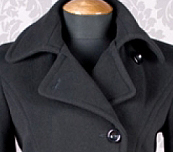 rounded departure.
rounded departure.
Despite the variety of stand-up collars (“kent”, “butterfly”, “vario”, “tab”, etc.), only one model is usually used for sewing coats - “shark”. Its peculiarity is its widely spaced (like the mouth of a predator) departure corners. So wide that they form an obtuse angle. Other types of stand-up collars adorn men's and women's shirts.
3. Flat-lying
Purely women's collars, which were brought into fashion... by a man. The cutesy king of England 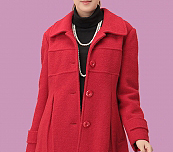 Henry III was passionate about dressing up. And also perfume yourself, wear white stockings and curl your hair. One day, the king considered that the popular “millstones” were very heavy and not elegant enough and ordered a camisole with a light lace collar to be made for himself. Well, what the head of state wears, everyone wears. Later, such collars began to be sewn from satin and velvet, pinched with a brooch and tied with a ribbon for greater beauty.
Henry III was passionate about dressing up. And also perfume yourself, wear white stockings and curl your hair. One day, the king considered that the popular “millstones” were very heavy and not elegant enough and ordered a camisole with a light lace collar to be made for himself. Well, what the head of state wears, everyone wears. Later, such collars began to be sewn from satin and velvet, pinched with a brooch and tied with a ribbon for greater beauty.
Today, finding outerwear with a flat collar is a great success. These coat models are beautiful, a little naive, incredibly feminine, but not very practical (they cover the neck poorly), so they are supplied to stores in limited quantities.
4. Jackets
These are collars that have switched to outerwear from formal suits, men's 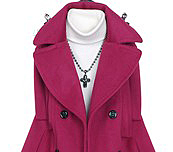 jackets and tailcoats.
jackets and tailcoats.
"English"(more often found under the name “classic”)
The most popular and perfect type of collar. Strict and elegant like an English aristocrat, he has been out of fashion and time for three centuries in a row, it’s not for nothing that almost all the coats of the President of Russia are decorated with this respectable collar!
East and West are fighting for the right to call it their own. The first claim that such 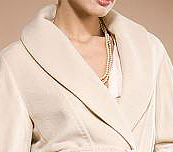 national Chinese robes had the shape of a collar, the latter are sure that "Schalke"- an invention of the Byzantines, who have long loved to decorate the sides of outerwear with fur. From these disputes, only one thing is known for sure: in the old days, only a rich and noble person could afford a shawl collar. (The poor preferred more practical styles).
national Chinese robes had the shape of a collar, the latter are sure that "Schalke"- an invention of the Byzantines, who have long loved to decorate the sides of outerwear with fur. From these disputes, only one thing is known for sure: in the old days, only a rich and noble person could afford a shawl collar. (The poor preferred more practical styles).
"Apache"
A strongly open rectangular collar, vaguely reminiscent of a guy in shape.. 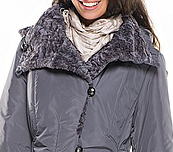 It was popular in Russia in the 60s of the last century. In Europe, he has been known for a long time, but is considered the collar of rebellious youth and hooligans - Apaches. These young people from the country of noble wines and intricate streets wore such wide collars to show their independence, their disdain for the “noose” tie, because it was simply impossible to wear it with an apache shirt!
It was popular in Russia in the 60s of the last century. In Europe, he has been known for a long time, but is considered the collar of rebellious youth and hooligans - Apaches. These young people from the country of noble wines and intricate streets wore such wide collars to show their independence, their disdain for the “noose” tie, because it was simply impossible to wear it with an apache shirt!
5. Fantasy
This group can safely include everything that is not included in the previous four. Fancy collars rarely stay “afloat” for a long time; these are, as a rule, trendy models that are worth purchasing in two cases:
1) You like to frequently update your wardrobe and be on trend.
2) You already have a couple of classic coats and are missing an original style for a special occasion.
A detail of clothing that forms the neckline and gives the product a completed look. This kind of edging can be both decorative and applied in nature, and be very functional. For example, high collars are excellent protection from the cold, and the wide collars can be used as a hood.
IN in a broad sense By appearance collars can be divided into five types. These are flat-lying, standing, fancy, stand-up and jacket type. Collars are classified separately according to the method of connection to the neck. In this gradation there are three types: one-piece, set-in and removable.
Overhead (removable) collars are very popular today. Such accessories can expand your wardrobe and give the most ordinary sweater/T-shirt an interesting appearance.
The most common types of collars
Flat collars are mainly used in finishing children's and women's clothing. They are used to design necklines of dresses and blouses. The main types of flat collars are: nautical (sailor or “guys”), shawl collar, frill, “Bertha”, “Peter Pan”, etc.
Stand-up collars are most often found in business-style clothing. The detail looks serious and gives things a laconic and strict look. Stand-up collars are also used when decorating coats, jackets, and windbreakers. High degree Closedness perfectly protects from wind and cold.
Stand-up collars come in many styles. The most common are: one-piece, trumpet collar, “Stuart”, stand-up with bent corners, etc. Such collars are laconic and give the products an elegant look.
Stand-up types of collars include shirt and polo collars. These finishing methods consist of two parts: a stand ( inner part gate) and departure. The visible part of a shirt-type collar can have many variations. The finishing of a polo shirt, as a rule, always looks the same: a small collar and two or three buttons.
Jacket collars are available in styles such as English, shawl, and apache. The first two are often used in jackets, raincoats, and coats. Shawl collars are also used to trim robes and dresses. The apache collar features wide lapels and appeared in men's fashion as a symbol of freedom. It is not customary to wear a tie with a collar of this shape.
The most interesting collars are fantasy ones. This includes designer neck trims that are difficult to categorize traditionally. These collar styles include the most unexpected details, decor and placement. An excellent example of a fantasy-looking collar is the “Bow”, invented by Chanel. This finishing method is a double scarf that is tied at the neck. It gives the image originality and romance. Fantasy collars also include: a chill mold, a hood, an extended frill without a stand.
What makes clothes more interesting and original? Of course, details. (ascot collar), which has English roots, is an excellent confirmation of this. Thanks to its wide variety, it can transform even the most ordinary product. Add zest, femininity and charm to it.
IN modern fashion This collar has firmly established itself in the women's wardrobe. But, like many objects and details, it came there from a masculine background. And today no one can be surprised by men’s clothes in a women’s wardrobe. Women have long considered them completely and completely theirs.
The history of this collar originates in an English village, 40 km from London, which is called Ascot. The fact is that starting from the 17th century, the largest horse racing Europe. Races are still held today at the city's Ascot Racecourse once a year at the end of June.
One of the unusual details men's suit, for such events, there was a bias ribbon made of expensive material, tied around the neck. It was decorated with beautiful brooches decorated with pearls and stones. Subsequently, this detail turned into a men's neck tie, which was tied around the neck and the ends were hidden under the shirt.
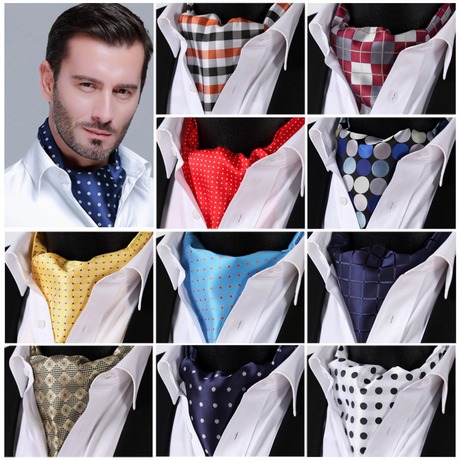
Coco Chanel, known for her love for men's clothes, adopted many details from women's wardrobe. And the ascot collar was one of them. She turned it into a bow and elegantly tied it around the lady's neck.
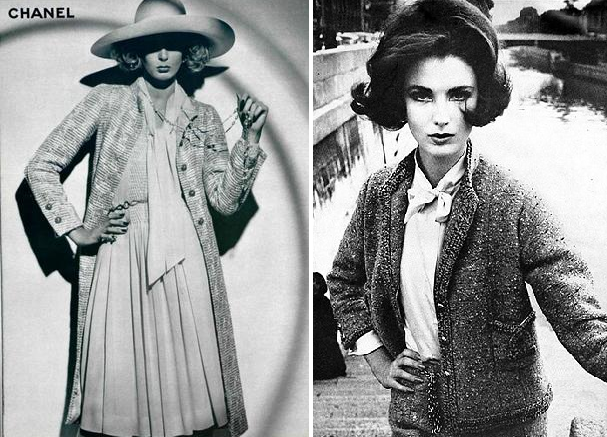
In the second half of the last century fashion designers decided that the ascot collar could be made more variable. Thus, women have another opportunity to diversify their images. During the years, this collar model, one way or another, was present in women's products.
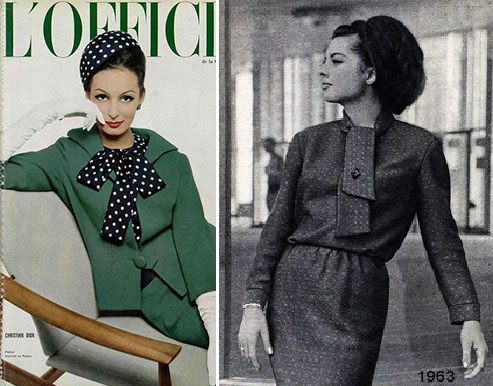
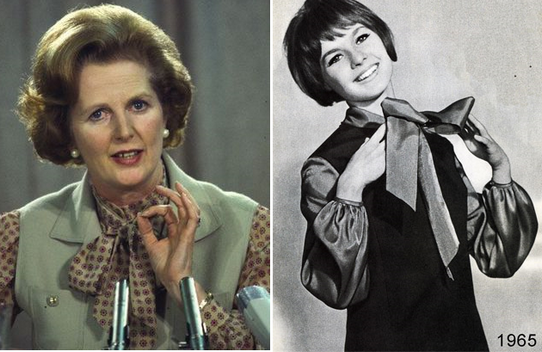
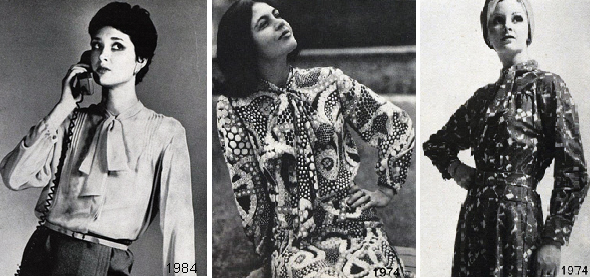
IN modern interpretation This stand-up collar model is a long strip of fabric sewn to the neckline. It is cut out either on an oblique or along a grain thread. Its ends can be tied in different ways, depending on their length. Their width can also be different. Thus, at the base of the neck you can tie a bow, a tie or an original knot, in the shape of a flower, for example.
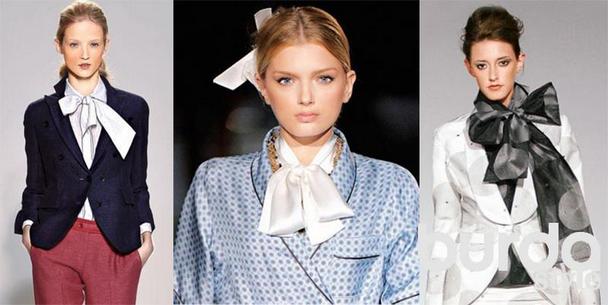
The dimensions of this part can vary greatly. Either it is a bow with long and narrow wings, or it is a huge bow that covers almost the entire bodice. In the latter case, he plays an active role and becomes the center of the composition.
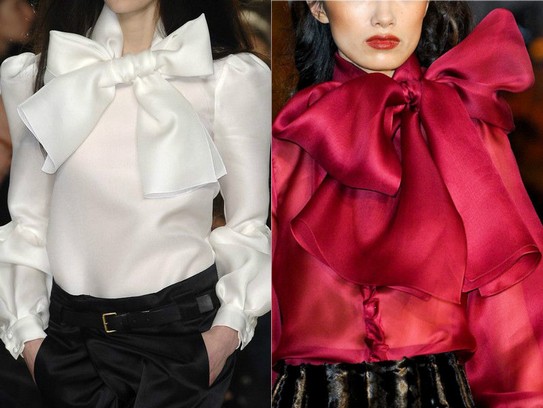
The ascot collar fits perfectly into business style. A blouse with an elegant bow will always make the look more delicate and romantic than a shirt buttoned to the very top. So either a blouse with this collar model is very good decision for those ladies who want to look feminine at work.
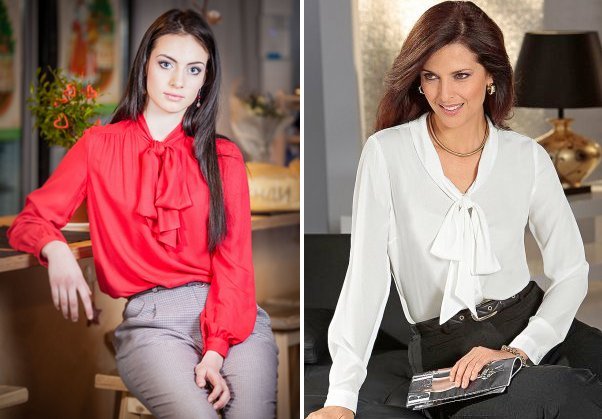
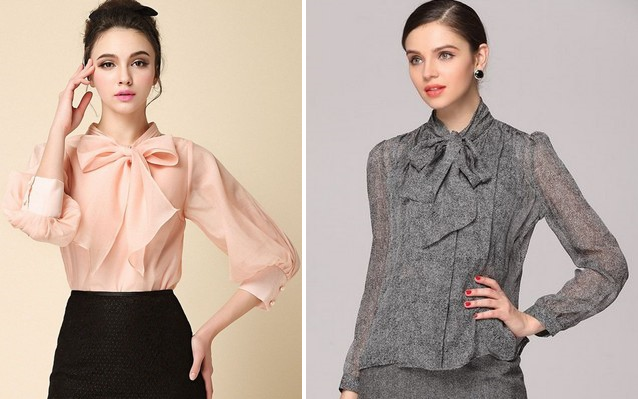
This collar is suitable for blouses, dresses and cardigans. Due to the variability of use, the product will look different in each case. A collar that turns into a tie will give the look a businesslike look and elongate the figure. , on the contrary, will make a woman more graceful.
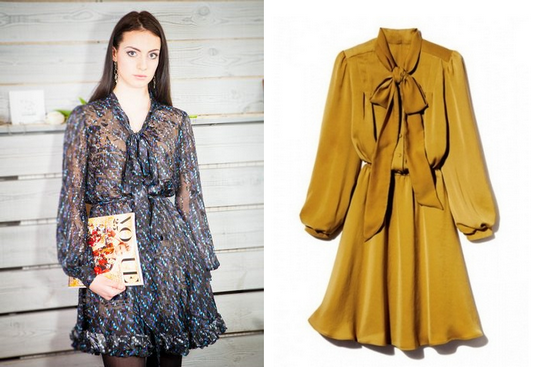
Designers offer many of the most different ways embedding an ascot collar into the product. I bring to your attention some of them.
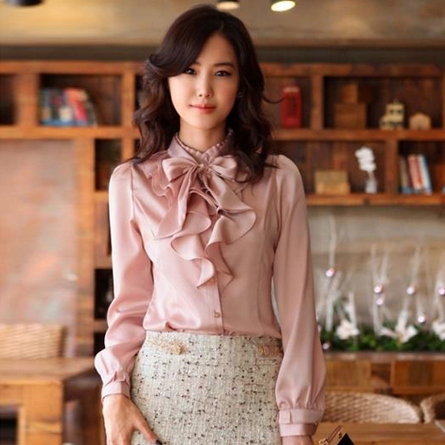
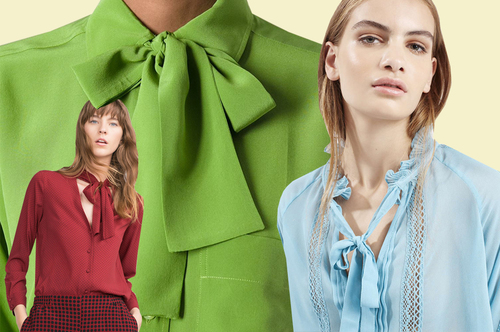
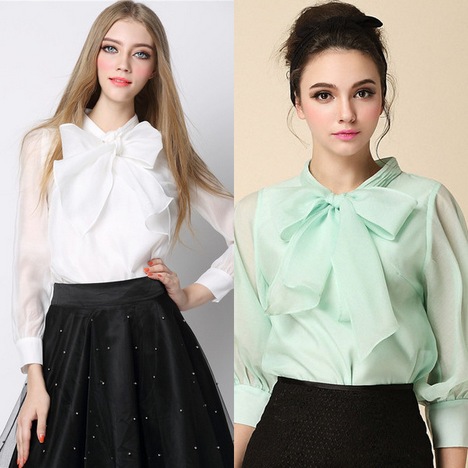
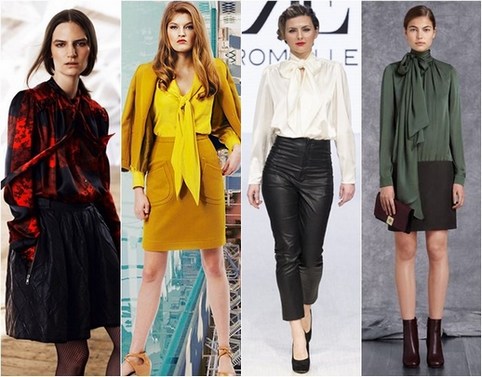
![]()
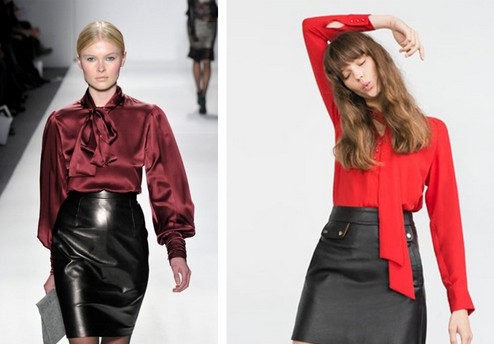
As you can see, necklines, collar sizes, tying methods and combinations with other collars delight with variety and give unexpected results. There is a great opportunity to choose the option that suits you best. Even the position of the bow can change and move from a central position to an asymmetrical one.
Such details remind many people and this is quite justified. But everything is new, it’s well forgotten old. If there are points that can be emphasized feminine attractiveness and add zest and charm to the image, you should definitely use them.
Do you have an ascot collar in your wardrobe?
If you found this information useful, share it with your friends!
Subscribe to the news to learn even more interesting things from the world of fashion!
Stay attractive and charming always!
The collar is a very important and expressive detail in the design of clothing. It not only gives the product a finished look, but also visually affects the contours of the face and chin. neck shape and length. The collar must comply with fashion requirements. shape and proportions of clothing.
Collars are very diverse in shape. They consist, as a rule, of two parts: the visible one - the take-off and the invisible one - the rack, between which there is an inflection line. According to the method of connection with the neckline and the principle of constructing the drawing, collars are divided into two types: those sewn into the neckline and cut together with the main part, most often with the front (one-piece). In shape, they can be standing (stand height 3.5-4.5 cm), stand-up (stand height 2.5-3.5 cm), semi-standing (stand height about 2 cm), flat-lying (stand height about 0.5 cm ). Collars also differ in width, which can vary from 4 to 24 cm.
When constructing a drawing, you need to keep in mind that what straighter line stitching, the higher the collar stand will be. You can choose your own collar shape for each face type. All fluctuations in fashion are usually accompanied by changes in the shapes and types of collars, which are characterized by great diversity. The main factors influencing collar design are:
Method of connecting the collar to the neck of the product (set-in, one-piece, combined);
Neck line shape; degree of fit to the neck (tight-fitting, flat-lying, lagging behind the neck);
Type of fastener for the product (closed, open).
When constructing patterns for any collars, the main importance is the shape of the stitching line into the neck and the height of the stand. The shape of the collar's flap can be very diverse and depends on the model and the imagination of the author.
The construction of the stand, its dimensions, and the configuration of the neck line determine the shape of the collar and the degree of its fit. With a maximum stand height and a straight or convex stitching line into the neckline, the collar fits tightly around the neck. By reducing the height of the stand and concave stitching line, the collar lies more flatly. In the absence of a stand, the stitching line coincides with the neckline in shape and the collar becomes flat. Collars, as a rule, consist of two parts: an upper collar and a lower collar (collar).
According to the method of construction, collars can be divided into three groups:
Set-in for products with a fastener all the way up (or for closed neck); one-piece and set-in for products with an open fastener; set-in and one-piece, flat-lying and fancy.
SET-IN COLLARS TO CLOSED NECK.
Patterns for set-in collars to the neck with a blind fastener are constructed separately from the pattern of the bodice and neck of the product. Depending on the configuration of the stitching line, collars can be: stand-up; stand-up; semi-turndown; apache; flat-lying
Stand-up collars have many varieties and are characterized by the presence of a stand of varying heights in the area where it is sewn into the neck of the back and tapering off towards its ends. In the area corresponding to the neck of the back and the upper third of the neck of the front, it is straight or slightly concave, and in the section of stitching into the rest of the neck it has a convex shape. The amount of curvature (in height along the line of the middle of the collar) ranges from 1.5 to 4.5 cm. The shape and size of the detachable part of the collar and its ends are determined by the model.
1. Stand-up collar to the neck with a fastener to the top.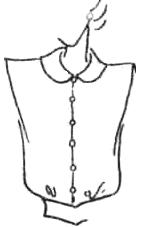
A,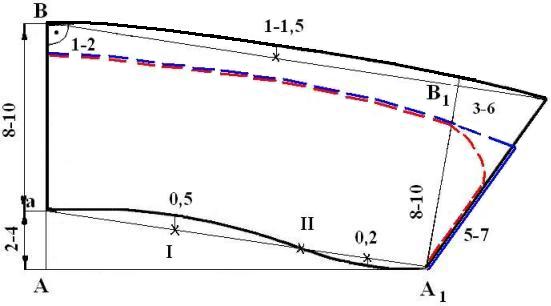
Mid line - vertical side of the corner.
Stitching line. From point A On the horizontal side of the corner, lay a segment equal to the measurement of the half-circumference of the neck plus 0.5 cm - the length of the collar and put a dot A 1
A A, = POsh + 0.5 = 18 + 0.5 = =18.5 cm
(Collar length can be measured along the neck line from the middle of the back to the middle of the front after trying on the product.) From the point A lay 2 - 4 cm along the middle line and put a dot A:
Aa= 2— 4 cm
Points A And A 1 A 1 and // draw down a perpendicular, on which 0.2 cm is laid. Points A 1 , 0.2, II. 0.5 cm and A connected by a smooth curve.
Departure cut. From point A 8 - 10 cm are laid up along the middle line - the width of the collar at the back. The same amount is laid on the perpendicular restored upward from the point A, on the segment a A 1 ; put points accordingly IN And IN 1 .
aB = A 1 IN 1 = 8-10 cm
Points IN And IN 1 connect with an auxiliary straight line, which is continued to the right by 3-6 cm (the amount of protrusion of the corner).
From the middle of the segment BB 1 restore the perpendicular upward, on which 1 - 1.5 cm are laid. A smooth curve extending from the point IN at right angles to the line segment AB, connect the dots IN, 1-1.5 cm and 3-6 cm. Points A 1 and 3-6 cm are connected under the ruler.
2. Half-stand collar to the neck with a fastener to the top.![]()
Construct a right angle with a vertex A, the sides of which are directed to the right (horizontally) and upward.
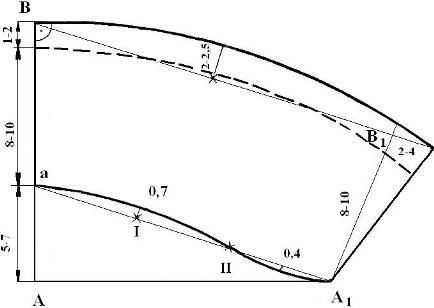
Midline - vertical side of the corner.
Stitching line. From point A on the horizontal side of the corner, lay a segment equal to the measurement of the half-circumference of the neck, – the length of the collar stitching line, and put a dot A 1 :
AA 1 , = POsh = 18 cm
(Collar length can be measured from the neckline from the middle of the back to the middle of the front after trying on the product.)
From point A lay 5-7 cm along the middle line and put a dot A:
Aa= 5-7 cm
Points A And A 1 connected by an auxiliary straight line, which is then divided into 3 parts. The division points represent / and //. From the point /, a perpendicular is restored upward and 0.7 cm is laid on it. From the middle of the segment between the points A 1, and // draw down a perpendicular, on which 0.4 cm is laid. Points A, 0.7 cm, //, 0.4 cm and A 1 connected by a smooth curve.
Departure cut. From point A 8-10 cm is laid up along the middle line - the width of the collar at the back. The same amount is laid on the perpendicular restored upward from the point A 1 to a straight line aA 1 . Place points accordingly IN And IN 1 .
aB= A 1 IN 1 = 8-10 cm
Points IN And IN 1 is connected by an auxiliary straight line, which is continued to the right by 2-4 cm (the amount of protrusion of the corner). From the middle of the segment BB 1 restore the perpendicular upward, on which 2-2.5 cm are laid. A smooth curve emerging from the point IN at right angles to the line segment AB, connect the dots IN, 2-2.5 cm and 2-4 cm. Points 2-4 cm and A 1 connect under the ruler.
3. Collar with a one-piece stand-up collar.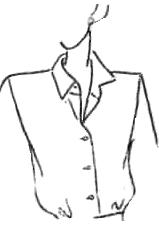
Construct a right angle with a vertex A, the sides of which are directed to the right (horizontally) and upward. 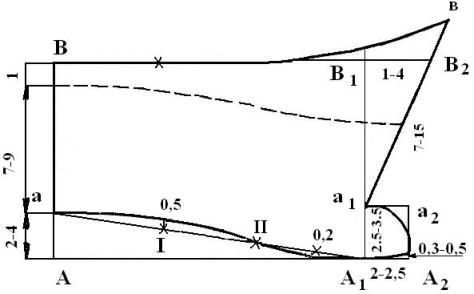
Mid line- vertical side of the corner.
Stitching line. From point A On the horizontal side of the corner, lay a segment equal to the measurement of the half-circumference of the neck plus 0.5 cm - the length of the line for sewing in the collar and put a dot A 1:
AA 1 = POsh + 0.5 =18 + 0.5 =18.5 cm
From point A 1 to the right horizontally set aside 2-2.5 cm - an allowance for half skidding and put a dot A 2:
AA 2 =2-2.5 cm
From point A lay 2-4 cm along the middle line and put a dot A:
Ahh= 2-4 cm
Points A And A 1 connected by an auxiliary straight line, which is then divided into 3 parts. The division points represent / and //. From the point /, restore a perpendicular upward and put 0.5 cm on it. From the middle of the segment between the points A 1 and // draw down a perpendicular, on which 0.2 cm is laid. The edge of the half-skid is raised from the point A 2 by 0.3-0.5 cm. Points 0.3-0.5 cm, A 1 , 0.2 cm, //, 0.5 cm and A connected by a smooth curve.
Rack. From points A 1 , And A 2 2.5-3.5 cm are placed upward vertically - the height of the stand and dots are placed accordingly a 1 And a 2:
A 1 A 1 =A 2 a 2=2.5-3.5 cm
The protrusion of the rack can be designed with a rounded curve connecting the points A 1 and 0.3-0.5 cm.
Departure cut. From point A up along the middle line they put 7-9 cm - the width of the collar at the back and put a dot IN:
aB=7-9 cm
From point IN A 1 , denoted by a letter IN 1 . Line BB 1 continue to the right 1-4 cm and put a dot AT 2 .
IN 1 IN 2 = 1-4 cm
Full stop AT 2 A 1 ; the line continues upward and on it from the point A 1 set aside 7-15 cm - the length of the corner; put an end to it V:
A 1 in= 7-15 cm
Line segment BB 1 divided into 3 parts and the right division point is connected by a smooth curve to the point V.
4. Collar with a detachable stand.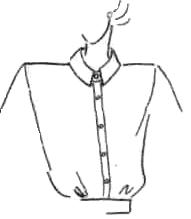
Construct a right angle with a vertex A, the sides of which are directed to the right (horizontally) and upward.
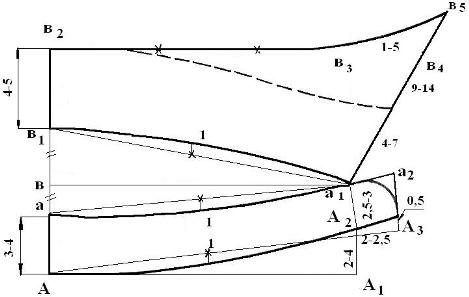
Mid line- vertical side of the corner.
The line for stitching the stand into the neck. From point A to the right lay a segment equal to the measurement of the half-circumference of the neck plus 0.5 cm - the length of the collar and put a dot A 1 |:
AA 1 = POsh + 0.5= 18 + 0.5 =18.5 cm
From point A 1 restore the perpendicular upward, put 2-4 cm on it and put a point A 2 :
A 1 A 2 = 2-4 cm
Full stop A connect under a ruler with a point A 2 , the line is continued to the right 2-2.5 cm (allowance for half skidding) and a dot is placed A 3 ;
A 2 A 3 = 2-2.5 cm
Line AA 2 divided in half. From the point of division, a perpendicular is restored downwards, on which 1 cm is laid. The edge of the half-skid is raised from the point A 3 by 0.5 cm. Points 0.5 cm, A 2.1 cm and A connected by a smooth curve.
Top section of the stand. From point A lay down along the middle line 3-4 cm - the height of the stand and put a dot A:
Aa= 3-4 cm
From points A 2 And A 3, restore upward perpendiculars to the segment AA 3, on which 2.5-3 cm are laid, and dots are placed accordingly A 1 and A 2 .
A 2 a 1 = A 3 A 2 = 2.5-3 cm
Points A And A 1, connected by an auxiliary straight line. From its middle, a perpendicular is restored downwards, on which 1 cm is laid. Points A, 1 cm and A 1 connected by a smooth curve. The protrusion of the rack can be designed with a rounded line connecting the points A and 0.5 cm.
Line for sewing the collar into the stand-up collar designed with the same bend as the top section of the rack. It is built as follows. From point A 1, swipe left horizontal line, which is the axis of symmetry. Its intersection with the midline is indicated by the letter V. From point V upward along the midline a segment equal to aw, and put an end to it V 1 :
bb 1 = aw
Full stop V 1 connect an auxiliary line to a point A 1 . Line segment A 1 V 1 divide in half and from the division point a perpendicular is restored upward, on which 1 cm is laid off. Points in 1 , 1 cm and A 1 connected by a smooth curve.
Departure cut. From point V 1 up along the middle line they put 4-5 cm - the width of the departure and put a dot at 2:
IN 1 V 2 = 4-5 cm
From point V 1 draw a horizontal line to the right. Crossing it with vertical line, drawn from the point A 1 is designated by the letter V 3. Line V 2 V 3 continue to the right 1-5 cm and put a dot V 4:
V 3 V 4 = 1-5 cm
Full stop V 4 connect under the ruler with a point A 1 The line continues upward and on it from the point A 1, set aside 9-14 cm - angle length; put an end to it V 5:
A 1 A 5 = 9-14 cm
Line segment V 2 V 3 divided into 3 parts and the right dividing point with a smooth curve is connected to the point V 5 .
5. Detachable stand-up collar.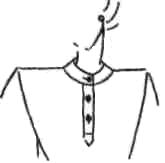
Construct a right angle with a vertex A, the sides of which are directed to the right (horizontally) and upward.
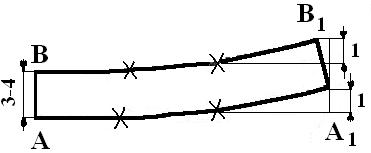
Line, middle - vertical side of the corner.
Top cut and stitching line. From point A On the horizontal side of the corner, lay a segment equal to the measurement of the half-circumference of the neck plus 0.5 cm - the length of the collar and put a dot A 1 ,:
A A 1 = POsh + 0.5 = 18 + 0.5 =18.5 cm
(The length of the collar can be measured along the neck line from the middle of the back to the middle of the front after trying on the product.
From point A along the middle line, set aside 3-4 cm - the width of the collar and put a dot IN:
AB= 3-4 cm
From point IN draw an auxiliary horizontal line to the right, and from the point A 1 up vertical. Their intersection is denoted by the letter IN 1 .
The front edge of the stand can be raised by 1 cm. To do this, from the points A 1 And IN 1 vertically put aside 1 cm. Segments AA 1 and BB 1 divided into 3 parts and the right division points are connected in pairs by smooth curves with 1 cm points. The length of the upper cut at the middle of the front is reduced by 0.5 cm.
The stand collar has many variations. The set-in stand-up collar in the form of a rectangular strip is slightly behind the neck. To build it, you need the length of the neck line and the height of the stand. The top cut line is parallel to the stitching line.
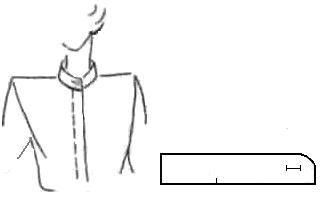
If you want to give the collar a funnel shape, the stitching line is bent in the same way in the opposite direction. 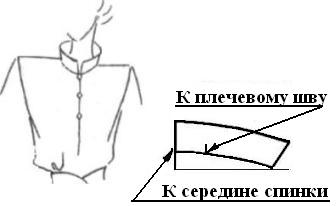
The cowl collar pattern is also rectangular in shape, but its height is twice the height of the stand. A collar pattern of this type is usually made with a slightly widened neckline. It is cut out at an angle of 45° to the warp threads and double width, i.e. the upper and lower collar are cut from one single piece of fabric, placing the takeoff line in the fold of the material.

Patterns for collars that turn into a bow or scarf are constructed similarly to a cowl collar and a rectangular stand-up collar, but the height and length of the collar are chosen depending on the model and type of fabric. 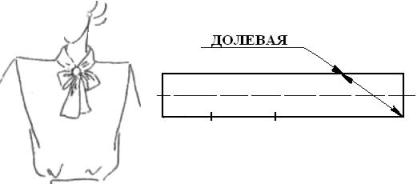
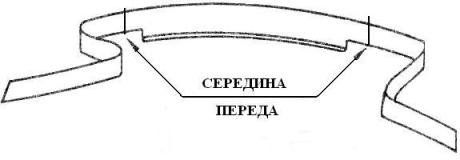
Fantasy models of stand-up collars.
